What Are Chess Pawns And How To Use Them?

Table of content:
- What is the chess pawn?
- How the pawn moves in chess
- How the pawn captures and en passant
- What are the basics of pawn structure?
- How to play games at GetMega?
Chess is a type of fine-play board game that uses extreme strategies and winning tactics to demonstrate your intelligence. Given the high-powered requirement for the game, it is no surprise that people who play chess usually focus on the major pieces that make the second-line of defense. Thus, most chess players strategize well for their bishops, knights, rooks, and queen, but they neglect the chess pawn.
The thing is, pawn chess is one of the integral parts of chess play. In chess, pawn moves may seem disadvantageous but the pawn in chess moves offers advantages like no other piece. The backward pawn may not be a thing but the special pawn move in chess, which we will discuss in a minute, is one of the most advantageous tactics. You can use it to sneak up on opponents’ pieces.
GetMega Rummy is an amazing platform that lets you play rummy with friends & family with real money. Sounds fun, isn't it? Download the GetMega rummy app now!.
Thus, today, we will discuss the pawns on a chessboard in little more detail. We will analyze the pawn movement in chess and the basic strategies for chess pawn structures. We will also diagnose the problems with having a hanging pawn or isolated pawn.
But first, let’s start with what the chess pawn really is.
What is the chess pawn?
The chess pawn is the most common piece on the chessboard. Each player on either side of the game board has 8 pawns, therefore, there are 8 black pawns and 8 white pawns making a total of 16 chess pawns in a chess game.
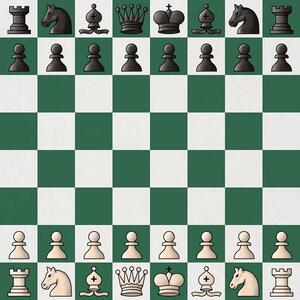
The pawns on a chessboard are considered minor pieces due to their prevalence and limited movements. Nevertheless, the pawn power in chess is absolutely unmatched. For one, they are available in numbers and they can flank various important pieces. Technically, you create a sturdy defense structure using pawns in chess, meaning your pawn structure reflects a good strategy.
You can identify the chess pawns on the chessboard as the shortest pieces that are available 8 in number. They form the first line of defense as the foot soldiers in a chess game. They have special powers that are often underestimated, thus making the chess pawn a useful minor piece in gameplay.
How the pawn moves in chess
The pawn in chess game typically has a distinguished forward movement. The special move of a pawn in chess, meaning the superpower that only chess pawn pieces can yield is a result of this forward movement.
The pawn movement and pawn special power may be a result of extensively studying the ancestral chess game called chaturanga. In the time period of the 6th century, in India, pawns were the foot soldiers in Chaturanga. When the concept was adapted into modern chess games, the chess pawn continued to move slowly as compared to the other three divisions and had the pawn power in chess that no other piece can yield.
The pawn moves in chess are diverse, despite what most beginners believe. Here’s how the pawn movement in chess occurs:
- The very first step that each pawn in chess game takes, offers two options. The pawn in chess moves two steps forward or one step forward. The two steps are more aggressive whereas the single-step pawn movement in chess can result in a vulnerability.

- After the first pawn moves in chess for all the pawns on a chessboard, they take single steps forward, aiming for the other end of the game board.
- If a pawn is blacked with another piece from your or the opponent’s troop in front, then the pawn cannot move till the piece blocking it is moved. Thus, having multiple pawns are advantageous.
- If a pawn is threatened for capture from its diagonal side in front, then they can capture that piece and change their lanes. That means if the D-pawn is progressing on the D-file and the E-pawn threatens to capture it, then the D-chess pawn can capture the opponent’s E-pawn by crossing over to the E-file and transitioning to a second E-pawn.
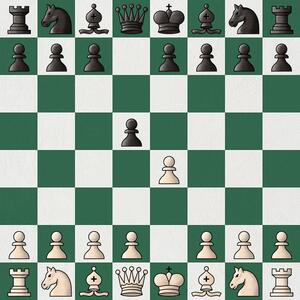
- When a chess pawn finally makes it to the other side of the game board, the pawn special move comes into play. The pawn can now be promoted to a higher rank of Rook, Bishop, Knight, or even Queen. This concept is derived from Chaturanga of promoting the foot soldiers with extraordinary performance.
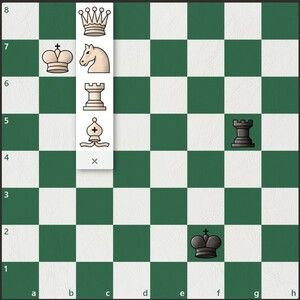
Now you know why the distinguished pawn moves in chess are so beneficial. Now let us take a look at how exactly the pawn in chess moves to capture the opponent’s pieces.
How the pawn captures and en passant
There is a special pawn move in chess that is a unique capturing and movement strategy that is only allowed to be used by the chess pawn. Here’s how the pawns on a chessboard move to capture an opponent’s piece.
Let’s assume that as the player with the white pieces, you start with the king’s pawn, i.e., the E-pawn and you move it to E4. Now black may play any of the central pawns or one of the knights, based on what strategies they are using to yield the pawn power in chess. Let’s say they moved the D-pawn to D5 for the purposes of understanding.
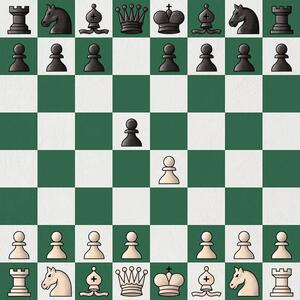
Now both the white pawn and black pawn are diagonally in one step ahead. Therefore, the white pawn on E4 can capture the black pawn on D5. It can also capture the pawn on F5 if black had chosen F-pawn moves in chess.
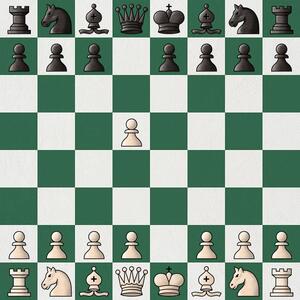
Please note that the pawn can capture pieces only when they are ahead. That means, the white pawn on E4 can capture the black pawns or other pieces on D5 and F5. However, if these pieces were to cross the white pawn such that they were diagonally one step behind, then the chess pawn cannot capture that piece. This is because a backward pawn movement is an invalid move.
There is another distinct manner though in which the chess pawn can make captures and it is called ‘en passant.’ It is a complex movement of sorts so, let us consider the example above.
Let’s say instead of moving the D-pawn, the player with the black pieces advances the E-pawn to E6. White then follows by moving the E-pawn to E5, thus blocking itself and black’s E-pawn. Now black can play the D-pawn two steps forward to D5.
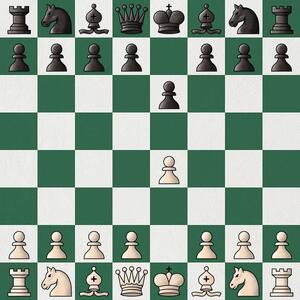

Normally, a pawn cannot make a capture unless the piece is diagonally in the front left or front-right corner. In the case of en passant though, the white pawn on E5 can capture the black pawn on D5 even though they are right beside one another.
There is a criterion to make this pawn special move in chess. En passant in the French language implies ‘in passing.’ Therefore, the pawn who is about to make the capture must do it in the next move.
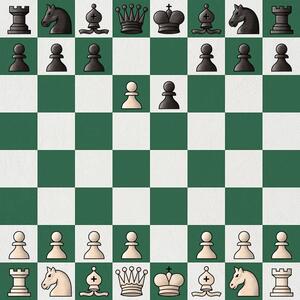
That means, in our example above, 3.exd6 should be the next logical move. If the en passant is not used in the immediate next move, then you cannot capture that piece no matter how long the E and D pawns sit next to each other.
What are the basics of pawn structure?
You can implement good chess strategies if you just create an impenetrable pawn structure. Here are the basics of chess pawn structure that you must bear in mind:
1. The passed pawn
This chess pawn phenomenon is mostly found in endgames in an advantageous position.
You have a pawn that can move unchallenged and unblocked by the opponent’s pieces, be it the major pieces or a pawn. The implication is there is nothing obstructing your pawn’s movement in chess nor is there any threat to it.
It creates a looming disadvantage since the chess pawn is very close to promotion.
2. The connected chess pawns
The concept of connected pawns is usually found in opening strategies wherein you can flank the pawns that you play with other pawns.
An example of this scenario for white is using the F2 pawn to flank the king’s pawn on E3 and the E-pawn to flank the d4 move of the queen’s pawn.
Since connected chess pawns flank each other, they make it challenging for the opponent to capture them and if one of them is captured, you can unleash the fleet onto your opponent.
3. The backward pawn
A backward pawn doesn’t really move backward because that is disallowed.
A backward pawn is basically a pawn that is stuck in its position, unable to move forward since there is an opponent’s piece blocking or threatening the possible movable square.
4. An isolated pawn
Isolated pawns are singular chess pawns that cannot be protected from attacks made by your opponent’s pieces since none of your pieces are close enough in itheirts range.
While passing pawns that are isolated are usually a boon for the game, the isolated pawns are a disadvantage. They are too far from your pieces and too close to an opponent’s line of attack. You should avoid isolated pawns in your pawn structure.
5. The double pawn
Doubled chess pawns can either be beneficial or disadvantageous to your pawn structure.
It is the phenomenon where you capture an opponent’s piece such that two of your pawns are now one behind the other. While having an empty file will help these pawns advance forward and achieve a double promotion, i.e., you can recover two pieces, there is a major problem.
Since the double pawns or on a single file, the opponent can black them both with a single chess piece.
If you are creating double pawns, make sure to do so on the B or G files where blocking the pawns is a major disadvantage for your opponent.
6. The hanging pawns
This is another disadvantageous pawn structure that you should avoid.
The hanging pawns are basically two or more of your chess pawns that are on adjacent squares but isolated from all other pawns. These pawn structures usually make good defense strategies, especially if the central pawns from C to F are all occupying the center of the game board. However, since the hanging pawns are adjacent, they cannot flank each other, which makes them highly susceptible to threats and captures.
It is best to avoid this strategy once you reach the middle game.
Aim to develop a substantial pawn structure with these basic elements to advance towards an incredible endgame strategy. As you can see, the pawn is a major component that has steadfast bearings on the outcome of your chess strategy. Thus, use these pieces wisely to tip the winning scales in your favor.
How to play games at GetMega?
GetMega is an online multiplayer platform that allows you to play games and earn real cash. Unlike its competitors, GetMega offers popular games instead of small video games, which makes this website so popular among people who want to earn money from playing games.
Here’s how you can start playing games on GetMega and earn substantial cash:
- Start by registering on the GetMega site using your Facebook profile. This is a crucial step since it helps verify your profile, which is a necessity to play games on GetMega.
- Next, you will receive a welcome bonus and referral code. Use the code to invite your contacts to play games with you and for each successful referral, you will receive additional bonuses.
- Once your account is set up, take a look at the game categories and the games within them in the drop-down menu. You can find three major categories, Casino, Casual, and Trivia. You can find games like Chess, Pool, Poker, carom, Rummy, etc. under the categories.
- Choose the games you know or like. If there are games that you like but don’t know how to play, you can learn on the GetMega platform using the rules and strategies they have available.
- Now that you’ve chosen the games, you need to decide if you want to play cash games, contests, or tournaments. Check out the buy-in values for the stakes and select the gameplay.
- Start playing games by putting up the money to buy onto the game table and start playing. The more games you play, the more you win, and the more you win, the more you earn.
Playing games on GetMega is a fairly easy and productive way to pass the day. Get started on earning money by simply playing your favorite games.
GetMega Rummy is an amazing platform that lets you play rummy with friends & family with real money. Sounds fun, isn't it? Download the GetMega rummy app now!.

